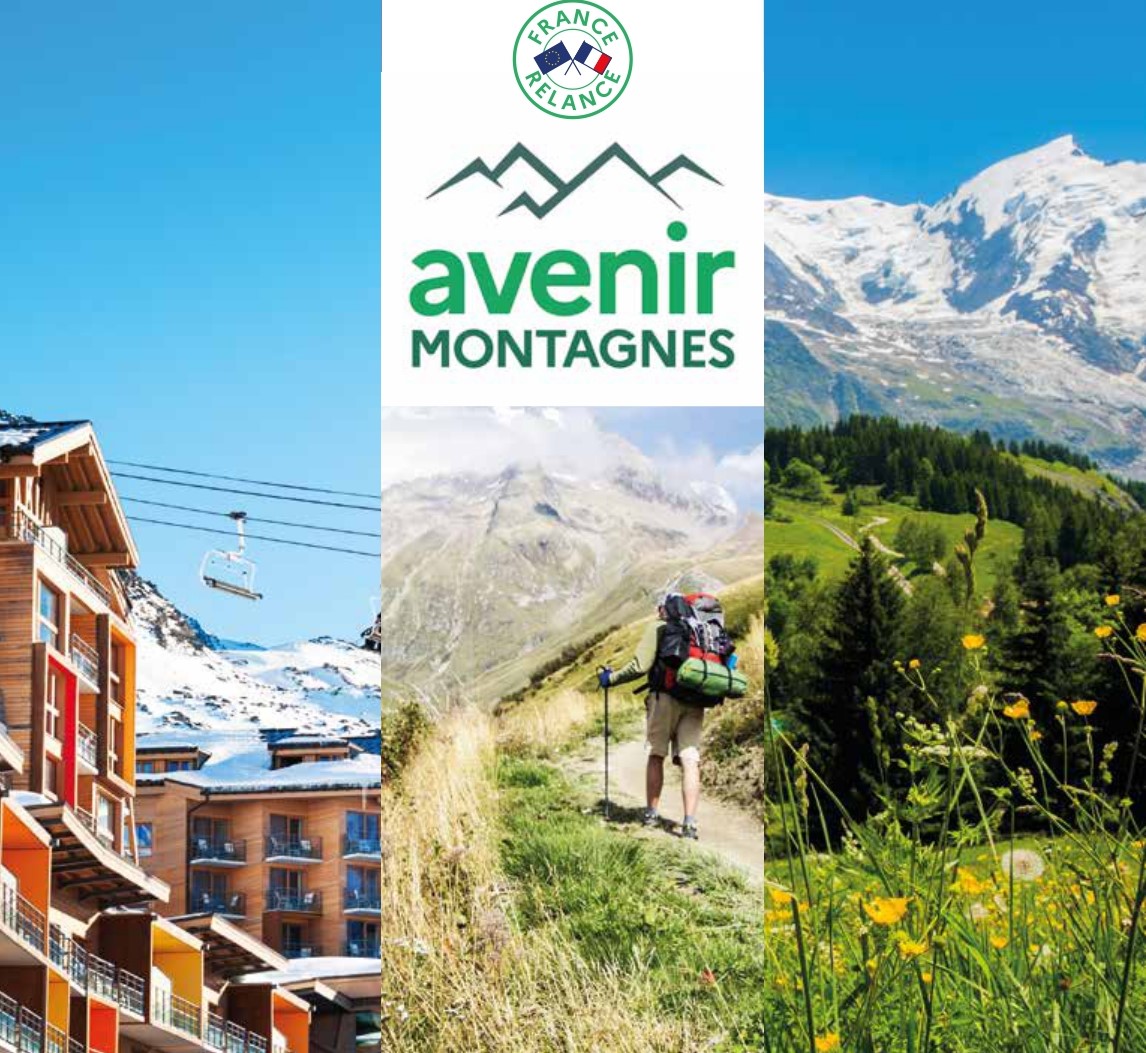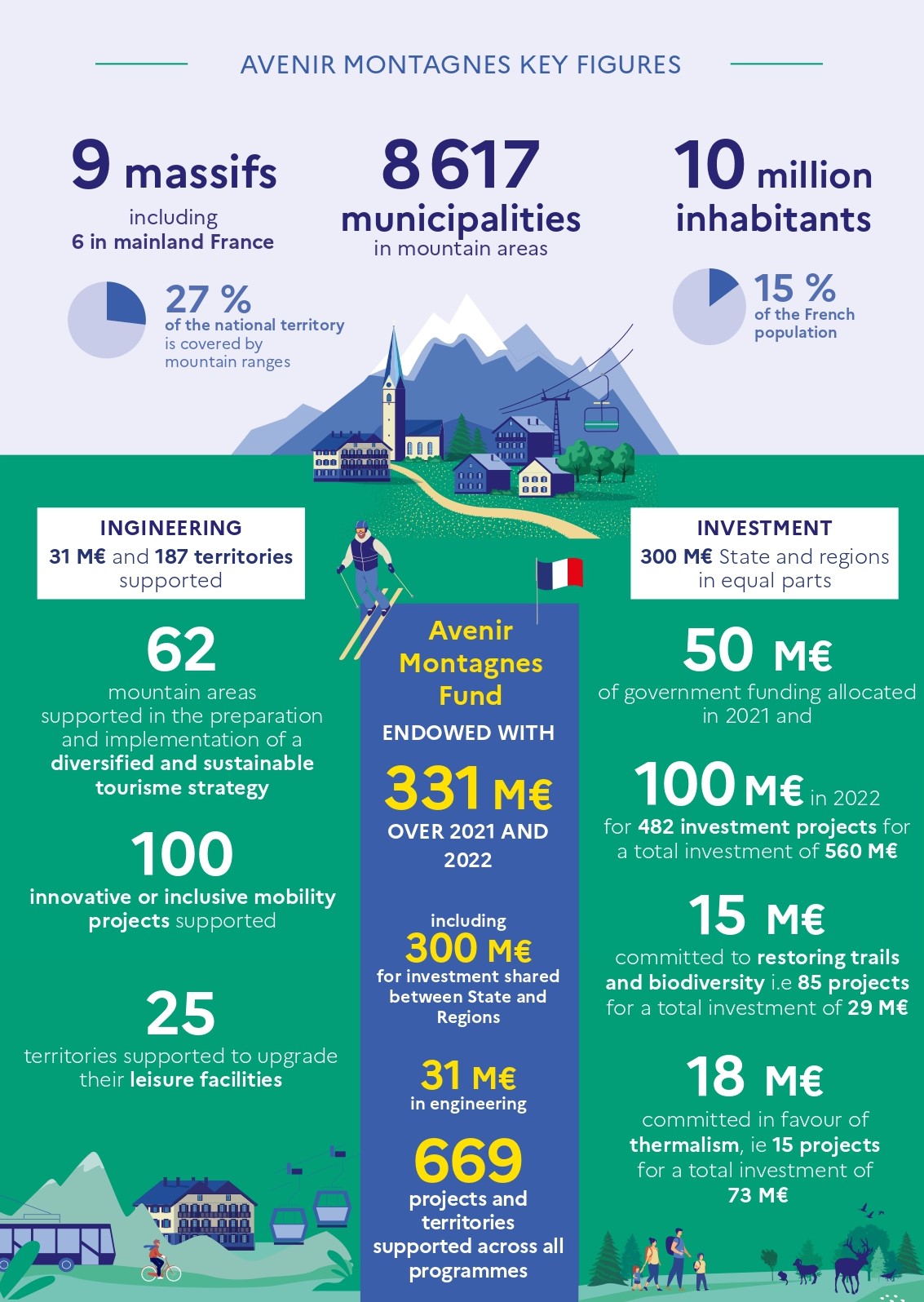‘Plan Avenir Montagnes’: earmarking resources for sustainable and resilient mountain tourism
French mountains, covering 27% of the territory, are renowned European tourist destinations. However, the tourism sector is facing escalating challenges and climate change is one of the most prevailing one. Launched in 2021, the Plan for the Future of Mountains (Plan Avenir Montagnes) is a large-scale public policy aimed at supporting mountain areas in the green transition of the tourism sector.
France’s mountain tourism in the face of climate change
With high confidence predictions that the duration of snow cover will be reduced by around 1 month per degree of global warming, more than 120 000 jobs are threatened because they rely on the opening of the ski areas. The ski sector is also contributing to the climate crisis and emissions linked to transportation (from and to the resort notably) amount on average to 52% of the emissions associated with a day’s skiing in a French Alpine ski resort. Accelerated by the growing interest for mountain tourism, conflicts of use also increase on such resources as water (3,000 m3 of water is for instance needed to provide 1 hectare of ski slope), land and on other economic activities such as agriculture.
The Future of Mountains Plan at a glance
Introduced in 2021 by the French Prime Minister, the Plan for the Future of Mountains, shaped through extensive consultations, is committed to fostering sustainable and diversified tourism in mountain regions. Key priorities include promoting year-round tourism (encourage a two- or four-season model), accelerating the green transition of mountain tourism through sustainable tourism, and revitalising holiday housing to prevent accommodations from being left empty outside peak seasons.
With a budget of €331 million for 2021 and 2022, the Future of Mountains Fund focused on two strands: investments and engineering. Overt the two years, a total of 669 projects have been supported across all schemes.

€300 million investment for sustainable mountain tourism
Approximately €300 million of public spending were earmarked for investments, and by 2023, 482 projects were financed. Areas of spending span from hiking paths to mobility and housing.
A budget of €10 million has for instance been allocated for the construction and restoration of 1 000 km of footpaths with the aim of preserving mountain biodiversity and encouraging nature education. Investments have also been channelled to the development of sustainable last mile mobility in mountain areas for touristic purposes but also for providing low emission solutions to the local inhabitants. Thermalism has been greatly helped with money geared towards the renovation or modernisation of spa establishments and wellness centres, putting an emphasis on the historical heritage value of such places. Some investment has been allocated to the development of sustainable tourist facilities linked to the diversification of the economic model (e.g summer slay). Finally, renovation of tourist and seasonal workers’ accommodation has been financed.
€31 million allocated to technical placed based support
To make engineering available to local actors, the technical component of the programme and its €31 million was divided into three schemes:
- Future of mountains, Engineering (€16 million): this scheme provides mountain areas with customised support for two years, to devise and implement their projects for a transition to more diverse and sustainable tourism. 62 territories are receiving this support. This entailed the funding of a project manager position in each selected territory for 24 months (with the possibility of extension under some conditions), a common curriculum offered to all of them, a catalogue of 53 measures carried out by various partners (hiking federation, co-construction and design thinking experts, institutional partners, …) to pick from and some guidance for elected representatives. Cross fertilisation opportunities between the territories were also provided.
- Future of Mountains, Mobility (€10 million): this scheme provided technical assistance to local authorities and their private partner for the development of projects on inclusive, innovative and environmentally friendly mobility in mountain areas, with an emphasis on last-mile solutions. 100 projects were selected to receive a financial support (up to 50% co-financing) but also technical support from a public technical partner (CEREMA).
- France Tourism Engineering (€5 million). This component offered two years of technical assistance to mountain resorts seeking to renovate their recreation infrastructure. 25 leisure sites were selected in 2021, covering 33 French resorts.
A unique collaboration thanks to the French Mountain Law
Thanks to its Mountain law, dating back to 1985, France has well established mountain institutions (National Mountain Council chaired by the Prime Minister, Massif committees, Préfet coordinator of the massif, and the Commissariats de Massif) and 9 clearly defined mountain ranges. This has played a crucial role in the design and implementation of the Future of Mountains Plan.
Within the Commissariat de Massifs, civil servants from the National Agency of Territorial Cohesion (ANCT), were especially pivotal in the deployment of the plan on the ground. They acted as an interface between technical, local mountain, administrative and political stakeholders.
